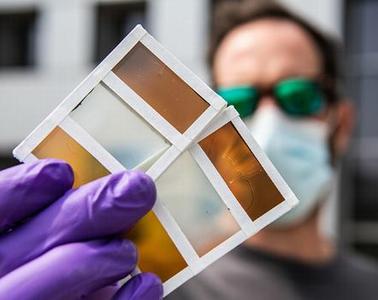
HARTFORD, Connecticut, August 27, 2021 (ENS) – Connecticut is facing a solid waste disposal crisis, and increasing the amount of recycled material is one of the ways state authorities believe they can solve it. To achieve this goal, the Housatonic Resources Recovery Authority, serving 258,100 people in 14 western Connecticut municipalities, has launched a new glass recycling program.
Katie Dykes, who heads the Connecticut Department of Energy and Environmental Protection, known best by its initials DEEP; along with Housatonic Resources Recovery Authority Chairman Matthew Knickerbocker; Oak Ridge Waste and Recycling CEO John Decker; and other industry stakeholders, Thursday celebrated the new program.
Beginning September 1st, 2021, residents in the 14 Western Connecticut municipalities served by the Housatonic Resources Recovery Authority, HRRA, will be asked to begin separating all “food-grade” glass containers from their mixed single-stream recycling, and instead bring glass to a local municipal drop-off center.
Examples of “food-grade” glass containers include such items as pickle jars, pasta sauce jars, liquor and wine bottles, most clear and tinted beverage containers.
It does not include items such as drinking glass, windowpane glass, mirror glass, auto glass, glass or ceramic coffee mugs, which cannot be recycled or remanufactured through the mixed stream recycling system.
These non-food-grade glass items should never be added to curbside collection bins as they only impede, not improve, the mixed stream recycling. Cross-contamination of glass, paper and plastic in the mixed recycling stream decreases the amount of material Connecticut is able to successfully recycle.
Window glass is separate and is accepted as mainstream waste
Although it is a state-mandated recyclable, food-grade glass is difficult to recycle once it is broken and intermixed with other recyclables. When mixed with other materials in the single stream process, a large portion of that glass becomes too contaminated to be recycled and is either sent for further processing or to landfills.
HRRA’s program to separate and capture the higher-value food-grade glass from other recyclable materials will improve the efficiency of recycling programs, lower costs to homeowners and municipalities, and be great for the environment, the agency said.
“Increasing recycling is one of the key methods identified by the Connecticut Coalition for Sustainable Materials Management to help solve Connecticut’s waste crisis as we see aging waste-to-energy infrastructure come offline,” DEEP Commissioner Katie Dykes said.
“We must take proactive steps to reduce and manage the amount of in-state waste we produce in order to provide system reliability, environmental sustainability, and fiscal predictability for our municipalities,” she explained.
“The new glass program initiated by the HRRA is a very positive step in that direction, and aligns with Connecticut’s recently improved Bottle Bill (Public Act 21-58), which calls for a minimum of 80 percent of wine and liquor bottles sold in the state to be recycled by 2023,” said Dykes.
The HRRA region includes Bethel, Bridgewater, Brookfield, Danbury, Kent, New Fairfield, New Milford, Newtown, Redding, Ridgefield, Roxbury, Sherman, Weston, and Wilton.
Glass recycling containers are available at each municipal recycling center or, for the towns of Sherman and Brookfield, at a municipal location. Site locations are listed at www.HRRA.org
For more information about the HRRA glass recycling program visit www.hrra.org or call HRRA at 203-775-4539 or email info@hrra.org
For more information about the Connecticut Coalition for Sustainable Materials Management, go here. For more information on recycling, what does and doesn’t go into your blue bin, and how to properly dispose of most items, visit RecycleCT.
For more information about Connecticut’s Bottle Bill, click here.
Featured image: Food-grade glass like these bottles and jars can now be recycled in 14 western Connecticut municipalities. March 12, 2021 (Photo by Chuckcars)
Environment News Service (ENS) © 2021 All Rights Reserved.


